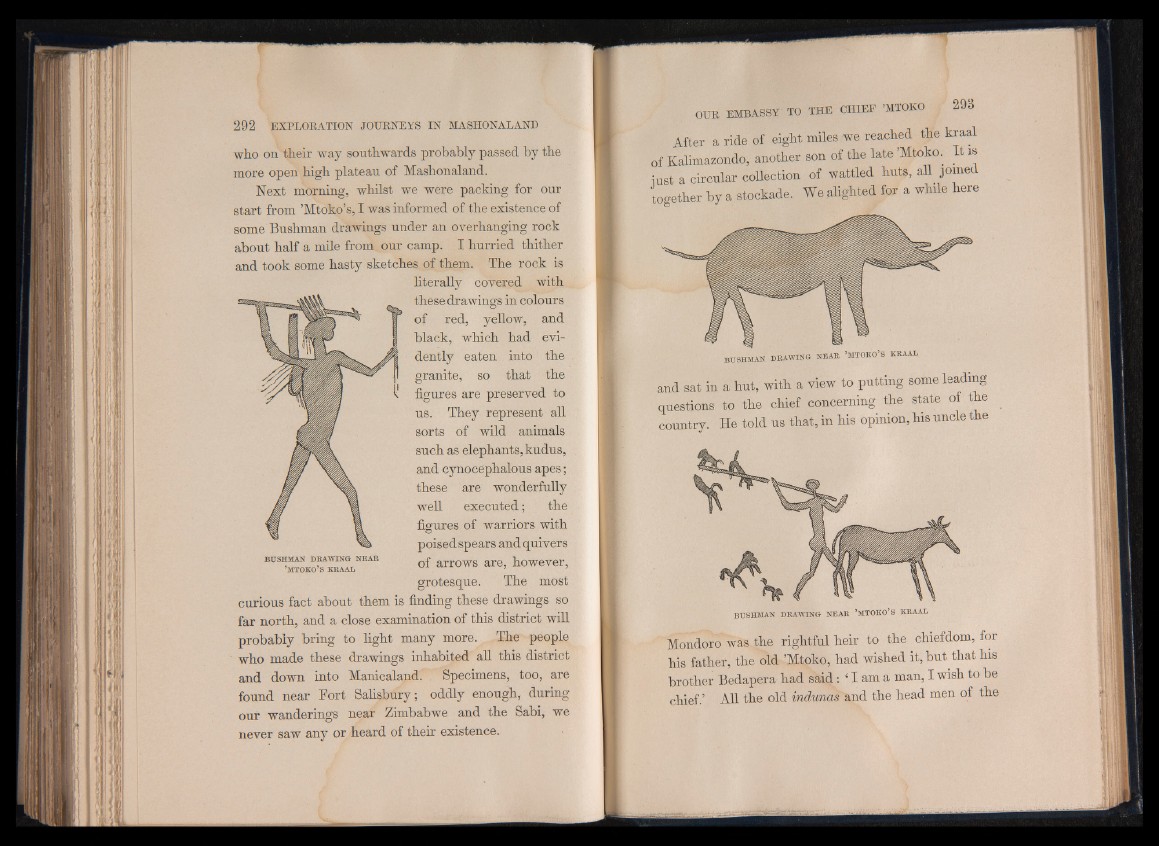
who on their way southwards probably passed by the
more open high plateau of Mashonaland.
Next morning, whilst we were packing for our
start from ’Mtoko’s, I was informed of the existence of
some Bushman drawings under an overhanging rock
about half a mile from our camp. I hurried thither
and took some hasty sketches of them. The rock is
literally covered with
these drawings in colours
of red, yellow, and
black, which had evidently
eaten into the
granite, so that the
figures are preserved to
us. They represent all
sorts of wild animals
such as elephants,kudus,
and cynocephalous apes;
these are wonderfully
well executed; the
figures of warriors with
poised spears and quivers
B u sm iA N d r a w in g NEAR £ arrows are, however,
’m t o k o ’s k r a a l 5 ’
grotesque. The most
curious fact about them is finding these drawings so
far north, and a close examination of this district will
probably bring to light many more. The people
who made these drawings inhabited all this district
and down into Manicaland. Specimens, too, are
found near Fort Salisbury; oddly enough, during
our wanderings near Zimbabwe and the Sabi, we
never saw any or heard of their existence.
After a ride of eight miles we reached the kraal
of Kalimazondo, another son of the late Mtoko. ^ t is
iust a circular collection of wattled huts, all joined
together by a stockade. We alighted for a while here
BU SHMA N DR AW IN G N E A R ’MTOKO’S KRAAL
and sat in a hut, with a view to putting some leading
questions to the chief concerning the state of t e
country. He told us that, in his opinion, his uncle the
BU SHMA N DR AW IN G N EA R ’MTOKO’S KRAAL
Mondoro was the rightful heir to the chiefdom, for
his father, the old ’Mtoko, had wished it, but that his
brother Bedapera had said : T am a man, I wish to be
chief.’ All the old indunas and the head men of the